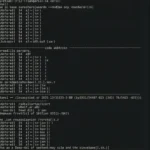This question often arises when you’re considering buying an OBD2 scanner for your vehicle. While OBD2 is the standard for modern vehicles, many older cars use OBD1. Let’s delve into whether an OBD2 scanner can read OBD1 data and understand the differences between the two protocols.
The OBD2 Protocol and its Features
OBD2, short for On-Board Diagnostics 2, is a standardized diagnostic system for vehicles manufactured in the United States after 1996, and in the European Union after 2001. It allows mechanics and car owners to access and interpret diagnostic information stored by the car’s computer, including:
- Engine performance: Engine RPM, fuel trim, oxygen sensor readings, misfire detection, etc.
- Emissions: Oxygen sensor status, catalytic converter efficiency, evaporative emissions system.
- Transmission: Gear position, shift timing, and other transmission parameters.
- Brakes: Brake pressure, ABS system status, and other brake-related data.
- Airbags: Airbag deployment status, sensor readings, and other airbag-related information.
Understanding OBD1: The Predecessor to OBD2
OBD1, the predecessor to OBD2, was introduced in the early 1990s. While it served a similar purpose, it lacked the standardization and advanced capabilities of OBD2. OBD1 systems are found in vehicles manufactured between 1991 and 1995 in the US.
The primary differences between OBD1 and OBD2 include:
- Standardization: OBD2 is a standardized protocol, ensuring compatibility across different vehicle makes and models. OBD1, on the other hand, was less standardized and had variations between manufacturers.
- Diagnostic Capabilities: OBD2 offers a wider range of diagnostic information, including emissions data, transmission information, and other parameters. OBD1 primarily focused on engine-related diagnostics.
- Data Transmission: OBD2 uses a standardized communication protocol (ISO 15765-4 (CAN) or ISO 9141) that allows for faster data transfer. OBD1 used proprietary protocols, making it difficult for universal scanners to read data.
Can OBD2 Scanners Read OBD1 Data?
The simple answer is no, a standard OBD2 scanner cannot read OBD1 data. This is primarily due to the differences in communication protocols and data structures used by the two systems.
Why the Incompatibility?
- Different Communication Protocols: OBD1 uses proprietary communication protocols, while OBD2 employs a standardized communication protocol. This means that a standard OBD2 scanner, designed to communicate using the OBD2 protocol, cannot understand the language of an OBD1 system.
- Data Structure: The way data is organized and transmitted differs significantly between OBD1 and OBD2. An OBD2 scanner cannot interpret the data structure used by an OBD1 system.
However, there are specific solutions to access diagnostic data from OBD1 vehicles:
- OBD1 Scanners: Dedicated OBD1 scanners are available, specifically designed to read data from vehicles equipped with OBD1 systems. These scanners use the appropriate communication protocols and data structures for OBD1 vehicles.
- Adapter Cables: Some manufacturers offer adapter cables that connect an OBD2 scanner to an OBD1 port. These adapters translate the communication signals between the OBD2 scanner and the OBD1 system, enabling basic diagnostics. However, their functionality is often limited, and they may not be able to access all OBD1 data.
What to Do if You Have an OBD1 Vehicle?
If you own an OBD1 vehicle and need to diagnose a problem, here’s what you should do:
- Identify the OBD1 port: The OBD1 port is usually located under the dashboard, near the steering column.
- Acquire a dedicated OBD1 scanner: This is the best way to access and interpret the diagnostic data from your vehicle.
- Consult a mechanic: If you’re not comfortable using an OBD1 scanner yourself, consult a qualified mechanic who has experience working with OBD1 vehicles.
Conclusion: Navigating the Differences
While standard OBD2 scanners are widely used and provide valuable information, they are not compatible with OBD1 systems. Understanding these differences is crucial when choosing a diagnostic tool for your vehicle. If you have an OBD1 vehicle, invest in a dedicated OBD1 scanner or consult a professional to address your diagnostic needs.
